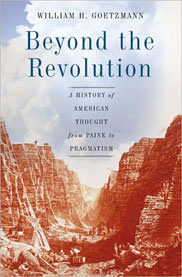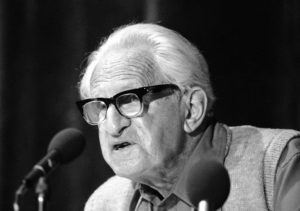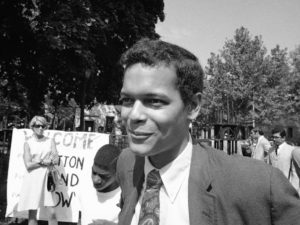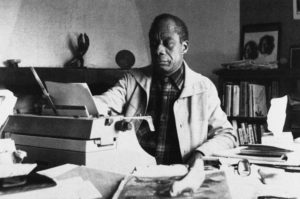Susan Jacoby on William Goetzmann’s ‘Beyond the Revolution’
The great divide between religion that accommodates itself to secular knowledge and biblically literal religion that rejects any such knowledge that contradicts the Bible is the insufficiently explored story at the center of this Pulitzer Prize-winning historian’s most recent and otherwise compelling book.
During the past half-century, American scholars have tended to place more emphasis on the anti-intellectual and anti-rational strains in our national character and history than on the vibrant, cosmopolitan intellectualism that played such a critical role in the founding of the new republic and has continued to exert a strong influence even during periods of popular reaction against what the cultural right has now dubbed “the elites.” Since the publication of Richard Hofstadter’s “Anti-Intellectualism in American Life” in 1963, cultural analysts of widely varying political persuasions have mulled over, in voices ranging from sorrow to apocalyptic fury, a seemingly endless set of new examples of hostility to reason and an excess of knowledge (or what ideologues on either the right or the left consider the wrong kind of knowledge).
As Hofstadter pointed out, many of these forces—from religious fundamentalism to suspicion of alien, “un-American” philosophies—are endemic to American culture, but they have mutated more expansively at a time when 24/7 video and digital infotainment mounts a continuous assault on the public’s attention span and memory. The eight years of George W. Bush’s administration, with its clear preference for the faith-based over the “reality-based” world, was the last straw, not the first, for those of us who envy Hofstadter because he was able to write about anti-intellectualism without having to study the content of cable “all-the-news-that-reinforces-your-views” shows, blogger rantings or the oxymoronically titled “reality TV.”
In “Beyond the Revolution: A History of American Thought From Paine to Pragmatism,” Pulitzer Prize-winning historian William H. Goetzmann provides a timely reminder that the undeniable anti-intellectual currents in American culture have always been opposed, with varying degrees of success, by a strong intellectual tradition, rooted not in the idea of American exceptionalism but in world culture. Although Goetzmann focuses on American intellectual history from the Revolution to the Civil War, his narrative seems freshly relevant at a time when the most anti-intellectual administration in American history has been succeeded by a president who campaigned on a promise to restore science and evidence to American policymaking.
In his 1994 Pulitzer Prize-winning “Exploration and Empire: The Explorer and Scientist in the Winning of the American West,” Goetzmann—professor emeritus in history and American studies at the University of Texas at Austin—challenged Frederick Jackson Turner’s thesis that America owed its unique civilization almost entirely to the presence of a vast western frontier offering infinite possibilities for economic exploitation. Goetzmann’s narrative was both persuasive and exciting, and it began with Meriwether Lewis and William Clark’s intellectual and physical daring in accepting President Thomas Jefferson’s commission to explore and provide extensive information about the new territory acquired in the Louisiana Purchase.
|
To see long excerpts from “Beyond the Revolution,” click here. |
Unfortunately, the intellectual history in “Beyond the Revolution” does not lend itself to a unifying narrative. Tracing the connections that link Benjamin Franklin, Thomas Paine, Thomas Jefferson, John Adams, Ralph Waldo Emerson, James Fenimore Cooper, Margaret Fuller, Frederick Douglass, Walt Whitman, Edgar Allan Poe, Victoria Woodhull and John C. Calhoun is very much akin to an attempt to herd butterflies.
Some of these people have a good deal to do with one another, in a historical as well as intellectual sense, but others can be connected only by straining to define each of them as intellectuals. If Woodhull, who started her public life as a spiritualist and ended it as a half-baked Marxist (with time out for exposing the adulterous adventures of Henry Ward Beecher, the most prominent American cleric of the late 19th century) was a serious intellectual, then I am the newest sensation on “American Idol.”
Goetzmann’s strongest chapters are his early ones, in which he examines the intellectually gifted men who made the American Revolution. The author consistently emphasizes that the early republic was designed and run, for the most part, not by fools who saw themselves as independent of European thought and their own country as an unsullied Eden but by thinkers who understood and acknowledged their debt to the European, Scottish and English Enlightenment.
Intellectualism and rationalism are not, of course, identical, but the United States was supremely fortunate that its most eminent Founders were not only intellectuals (a term not used until the 19th century) but had ideals that were rooted in Enlightenment reason. True to their Enlightenment values, they perceived no contradiction between the life of the mind and an active role in the world; they would have seen the aphorism “those who can’t do, teach” as utterly false.
Yet in his eagerness to give American intellectuals their proper due, the author frequently fails to give sufficient weight to the anti-rational, anti-intellectual forces arrayed against those whose highest values were learning and reason. The book properly begins with Thomas Paine and his famous statement, “We have it our power to begin the world anew.” Paine, born in England in 1737, is the perfect example of the internationalist Enlightenment influence on the founders. He did not immigrate to colonial America until 1774, and he arrived in Philadelphia with just two assets—his writing ability and a note of recommendation from Benjamin Franklin, who was serving as colonial Pennsylvania’s representative in London when he met Paine. Yet Paine was soon to become the pre-eminent—indeed, the essential—propagandist for the Revolution, and Goetzmann rightly points out the internationalist nature of the vision that Paine offered in “Common Sense.” “The cause of America is in great measure the cause of all mankind,” Paine argued. “ ’Tis not the affair of a city, a county, a province, or a kingdom, but of a continent—of at least one-eighth of the habitable globe. ’Tis not the concern of a day, a year, or an age; posterity are virtually involved in the contest, and will be more or less affected, even to the end of time, by the proceedings now.” Goetzmann correctly describes Paine’s desire to found a revolutionary government with a blueprint drawn from the “world of reason and experience”—an essentially secular vision that would eventually be laid out in a written constitution.
The author returns to Paine in his discussion of other members of the Revolutionary generation—including Adams, Jefferson, James Madison and Alexander Hamilton. But he alludes in only one vague, cursory sentence to the fact that Paine was, by his death in 1809, destitute and reviled in the nation he had done so much to bring into being. Paine’s fall from American grace was triggered by his authorship of “The Age of Reason” (1793), which set forth the astonishing idea that all religions, including Christianity, were man-made and that the Bible, like other sacred books, was not to be taken literally.
“My own mind is my own church,” the credo Paine proclaimed in “The Age of Reason,” was unacceptable to a large number of Americans, who, during the Second Great Awakening, were reacting against the violence and anti-religiosity of the Jacobin terror in France as well as the Enlightenment deism of many of the Founders. President Jefferson, one of Paine’s few Revolutionary colleagues who did not publicly desert him, took a considerable political risk to enable Paine to return home from France (where he had been arrested for opposing the execution of Louis XVI) in 1802.
Paine’s memory was kept alive by small groups of freethinkers in New England and New York City, but it was not until the eve of the Civil War that the irreproachable Atlantic Monthly would decry the lack of historical respect accorded Paine’s contributions to the cause of independence—while still denouncing his anti-religious writings.
Even now, the permanence and power of the conservative religious animus toward secular intellectualism is underscored by the absence of any statue of Paine in the U.S. Capitol. In “Beyond the Revolution,” Goetzmann tells the story of Paine’s intellectual contributions to the founding of the nation without giving sufficient weight to the anti-secular and anti-intellectual forces that, while paying lip service to the author of “Common Sense,” have all but erased the American memory of Paine’s economic radicalism and his opposition to orthodox religion. What does it say about American culture that Paine’s writings are much better known, and more influential, in England and France than they are here? Even in a history focusing on the importance of America’s intellectual tradition, it is necessary to take more than a fleeting look at the strength of the opposition long faced by real intellectuals in this nation.
In many respects, this book is a history of New England intellectualism rather than intellectualism throughout the country. Goetzmann offers an admirable account of the role of the Massachusetts educational reformer Horace Mann in pioneering a system of compulsory public education as well as secularizing schools so that they could accommodate students of widely varying religious beliefs. Yet the author is mistaken in his contention that Mann’s role in “the transformation of the schools and the creation for the first time in world history of mass free public education in mid-nineteenth-century America did more to create a common national spirit than all the literary and oratorical rhetoric.” That national spirit existed only in the non-slave states.
With the exception of North Carolina (where another extraordinary reformer, Calvin Henderson Wiley, was called “the southern Horace Mann”), the South did almost nothing to create a system of public education. The dearth of Southern public schools in the antebellum era gives the lie to the idea, long promoted by historians articulating the post-bellum Southern point of view, that the relatively brief period of Reconstruction accounts for the enduring educational backwardness throughout much of the South.
In the 1840 census, the proportion of children enrolled in public schools in New England was twice that of the mid-Atlantic states and six times greater than in the Southern states.1 The mid-Atlantic states, the Midwest and the Far West caught up with New England by the end of the 19th century, but the severe disparity between the South and the rest of the nation did not begin to be closed until after World War II and has not entirely disappeared today.
Indeed, Goetzmann does not adequately address the intellectual impoverishment of the South after the death of the Enlightenment generation—an inevitable process shaped by the incompatibility between slavery and Enlightenment ideals. The author picks John C. Calhoun, vice president under John Quincy Adams and Andrew Jackson and an adamant supporter of slavery, as the prime example of a tormented Southern intellectual. “Perhaps it was part of the South’s general emotional posture before the irrational assaults of the abolitionists,” Goetzmann argues, “perhaps it was his very close connection with the Bank of South Carolina, which owned mortgages on many of the slaves in his native state, perhaps it was his own status as slaveholder that made Calhoun so vigorous in his defense of the sordid institution.” Perhaps? What “perhaps” is there about it? Goetzmann also suggests that Calhoun’s attachment to slavery stemmed from his “long-held view of predestination and the dependent role of man in the world.”
It is certainly true that one of the great intellectual divides in this nation, then and now, is the chasm between religion that accommodates itself to secular knowledge and biblically literal religion that rejects any secular knowledge contradicting the Bible. Yet Goetzmann has almost nothing to say about Southern intellectuals forced out of their native region by their moral and intellectual anti-slavery convictions. As a counterpoint to Calhoun, the author might have picked two anti-slavery intellectuals from his state, the Charleston-born sisters Angelina and Sarah Grimké. The Grimké sisters were Quakers who, in the 1830s, scandalized conservative New England clerics by speaking out against slavery in public at a time when women rarely raised their voices in open forums—much less before mixed audiences of men and women, blacks and whites.
Although “Beyond the Revolution” includes now-obligatory chapters on female and African-American intellectuals, these sections are unsatisfying because Goetzmann barely mentions many major figures and includes many minor ones who are really historical curios rather than a part of mainstream American intellectual history. It is astonishing, for example, that the chapter on women details the checkered career of Woodhull and barely mentions Lucretia Mott, who, along with Elizabeth Cady Stanton, was the moving spirit of the Seneca Falls women’s rights convention and a prolific writer and speaker from the 1830s until her death in 1880.
Instead, Goetzmann devotes pages to the story of Jane Storm McManus, a peripatetic adventurer known chiefly for her devotion to the cause of Texas independence and for the number of men who fought duels on her behalf. McManus is an interesting character, but she is an important figure neither in general American intellectual history nor in women’s history.
Perhaps it is wiser for scholars who received their training more than 50 years ago—when neither women nor African-Americans were part of the scholarly canon—to acknowledge their limitations rather than to provide idiosyncratic tidbits about portions of history that were given short shrift by higher education until the late 1960s.
That said, there is much of value in this sweeping history when the author is talking about subjects that fall within his area of expertise. His chapter on the role of intellectuals and serious naturalists in the exploration of the West, as might be expected from his earlier prizewinning work, is exemplary. There is a wealth of material here to support the thesis that even those parts of American culture thought to be most uniquely American were never divorced from European civilization. John C. Frémont’s poetic yet precise descriptions of his journey along the Oregon Trail were greatly enhanced by the work of his Prussian cartographer, Charles Preuss. Indeed, Frémont was an admirer and correspondent of the great Prussian explorer Alexander von Humboldt.
The unevenness of this book, ranging from fascinating stories combining intellect and adventurousness to stultifying attempts to pin the intellectual label on unsuitable donkeys, only reinforces the wisdom of the chestnut that every decent high school English teacher proffers to aspiring adolescent authors: “Write about what you know.”
1Scott Baier, Sean Mulholland, Chad Turner, Robert Tamura, “Income and Education of the States of the United States of American: 1840-2000.” Working Paper 2004-31.
|
Susan Jacoby is the author of “The Age of American Unreason” and the recently published “Alger Hiss and the Battle for History.” |
With an uncertain future and a new administration casting doubt on press freedoms, the danger is clear: The truth is at risk.
Now is the time to give. Your tax-deductible support allows us to dig deeper, delivering fearless investigative reporting and analysis that exposes what’s really happening — without compromise.
Stand with our courageous journalists. Donate today to protect a free press, uphold democracy and unearth untold stories.







You need to be a supporter to comment.
There are currently no responses to this article.
Be the first to respond.